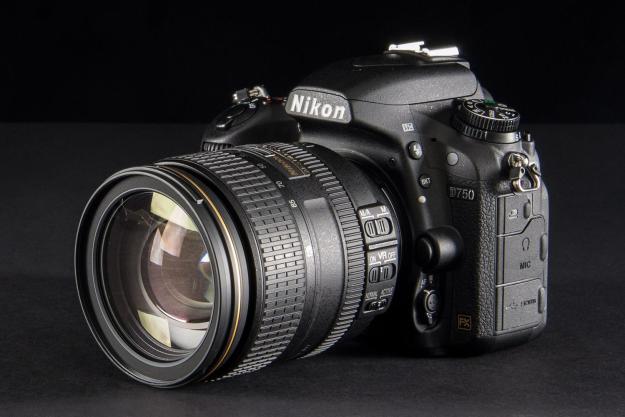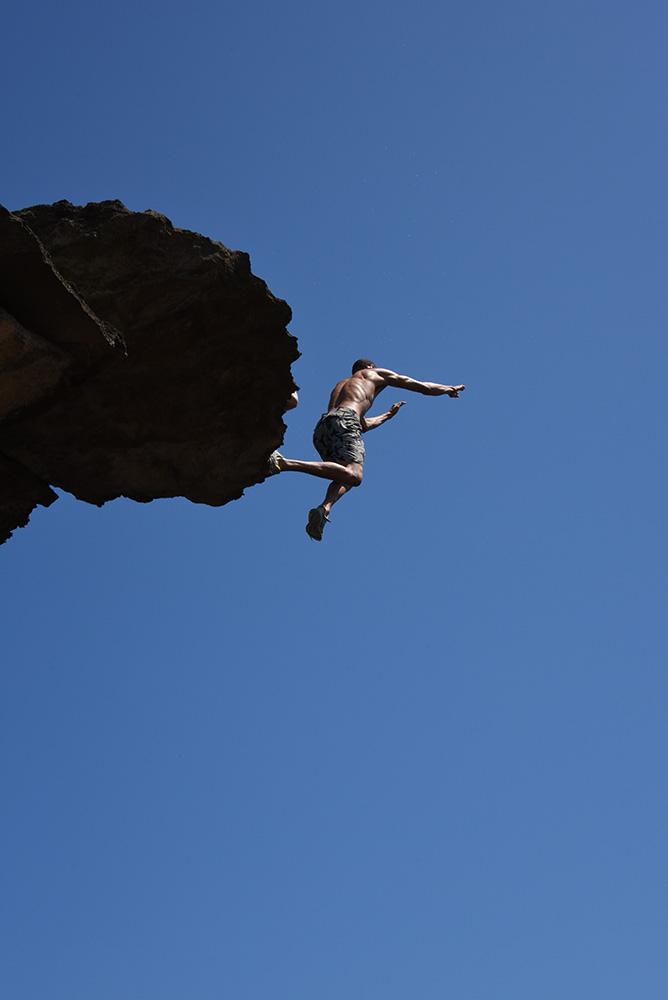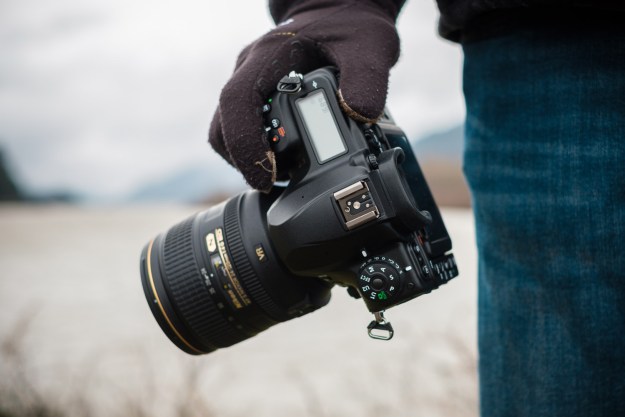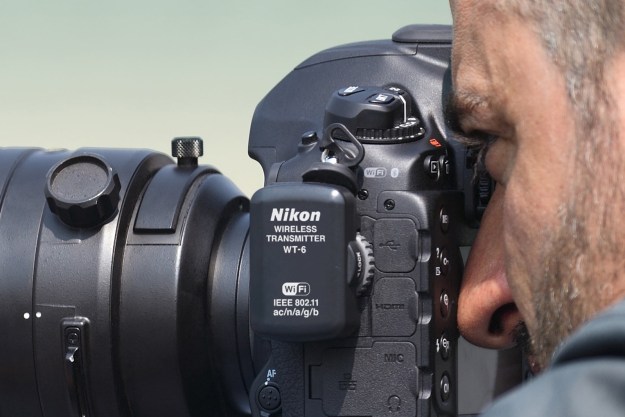
“Simply put, with its strong performance and high-quality photos and videos, the Nikon D750 is one of the best DSLRs we have ever tested.”
- Beautiful full-frame stills
- Excellent 1080/60p movies
- Speedy response
- Expensive
- Shutter speed tops out at 1/4,000
- Underexposes some scenes
The D750 slots between the entry D610 and D850 (with the high-end D5 rounding out the full-frame offerings). In fact, think of it as a baby D810 with many trickled-down features, that make it more powerful than the D610. First available in late 2014, the D750 is getting on in years — we wouldn’t be surprised to see an update soon. But, the camera’s age means the price has dropped, making it still a viable option at about $1,700 body only compared to the $3,300 D850. While older, it’s a camera many photographers are drooling over. Delivering incredible still images and videos, we can see why the D750 is turning heads.
This review was originally published on October 17, 2014. It has been updated on September 21 to reflect current pricing. As of now, the D750 is still part of Nikon’s current DSLR lineup.
Features and design
The Nikon D850 is an excellent DSLR with both speed and high resolution, but at $3,300 (body only) it’s for a select group of well-heeled enthusiast photographers or professionals whose work depends on such equipment. The D750 is definitely its smaller sibling – in weight, megapixels, and price – but it’s hardly inexpensive at nearly $3,600 with a very capable kit lens. That said, the D750 has loads of appealing features including a 24.3MP full-frame sensor, the same autofocus system as the $5,860 D4S, 1080/60p video capture, built-in Wi-Fi, and top ISO of 51,200.
The D750 goes from basic to highly advanced – it’s up to you to decide what you want from the camera.
The D750 looks like every Nikon DSLR. It’s a bit boring but it is what it is – a very utilitarian, black-bodied single-reflex interchangeable lens camera. The body alone measures 5.6 x 4.5 x 3.1 inches and weighs 26.5 ounces. Add a battery, card, and lens, and the D750 becomes one solid and hefty camera. It’s smaller and lighter than the D810, but it uses the same sturdy carbon fiber/magnesium alloy construction as its bigger brother.

The key feature on the front is the Nikon F-mount, which opens up a world of Nikkor lenses. Our test rig came with the f/4.0 24-120mm VR stabilized zoom, which is one the best kit lenses we’ve ever used. With a nice wide-angle, reasonable telephoto, and relatively compact size, it’s a great starter for Nikon first-timers. Yes, it brings the price to $3,600, but if you want to enter full-frame territory, you’ll have to dig deep.
At one point, Nikon issued a recall to repair the shutter on the D750, However, the recall was for cameras manufactured only within a certain time frame and new buyers should be safe from sending the camera in for a free repair.
Also on the front is an AF Assist lamp to help focus in low light, stereo mics, and buttons for Function, Depth of Field preview, and lens release. On the right side of the lens mount (facing forward) are Flash Mode/Compensation, Bracketing, and focus control (Auto, Manual) keys.
The photos are mouth-watering. Accurate colors have a depth you just don’t get with less-expensive APS-C sensors.
The back has another very consumer-friendly feature: a tilting 3.2-inch display rated 1,229K dots. Although it doesn’t swivel out or turn completely over for protection, it lets you shoot from the waist, overhead, or at other creative angles. The hinge is really solid and looks almost over-engineered, but better to have more than less, especially with such a hefty investment. We used the camera in a wide variety of lighting situations and had no issues with wipeout or reflectivity. The viewfinder is quite bright and has 100-percent horizontal and vertical frame coverage in FX (full-frame) mode.
The rest of the back has the usual gang of buttons and controls that are clearly labeled. There’s Playback, Delete, Menu, Help/White Balance, Quality/Enlarge, ISO/zoom out, and the “I” button to change shooting settings. There’s also AE-L/AF-L (auto exposure/autofocus lock), another jog wheel, an Info key, and a controller with center OK button to move through menus. Lastly, there is the Live View control with a lever to switch between stills and videos.
On the right side is the memory card compartment that holds two SD cards. Given the large file sizes, 6.5-fps burst shooting, and 1080/60p video, this is hardly overkill as we almost filled a pair of 32GB SDHC UHS-1 cards during a rather hectic and scenic trip (more on this in the Performance section). On the left side are three compartments. The top has the Accessory Terminal, below that are the headphone and mic jacks, while the lowest has the USB and HDMI connections.
The bottom of the D750 has the tripod mount and battery compartment; the supplied power pack is rated a very good 1,230 shots (per CIPA rating standard). You’ll really have to go flash and video crazy to wear the battery down.
Overall, there’s nothing really intimidating about the D750 although the supplied 508-page user’s manual might give you some pause. The camera goes from basic point-and-shoot to highly advanced, such as sophisticated remote flash setups. It’s up to you to decide what you want from a camera – the D750 definitely offers room to grow photographically.
Performance and use
Nikon held a media event in Puerto Rico to give reviewers an opportunity to test the camera in a variety of locales and settings. Among the scenes we shot were buildings in Old San Juan (including the historic El Morro fort), an Atlantic Ocean/cemetery sunrise walk – no zombies, fortunately – salsa dancers and musicians, colorful street art, cliff jumpers, caves right out of pirate movie, and horseback riders in the surf, among other things. (Between this event and a run around a speedway at 100 mph at the Bondurant Performance Racing School in our local test bed of Phoenix, we filled up both 32GB SD cards in no time.)
Video capture is quite good and the movies are among the best we’ve ever shot with a DSLR.
As you can see in the samples, the Nikon D750 is a stellar camera – one we dubbed an Editors’ Choice without hesitation. Sure, there are a few issues like a top shutter speed of 1/4,000th of a second instead of the 1/8,000 of many high-end cameras. We found this to be a drawback capturing fast-moving salsa dancers in the 6.5-fps burst mode. Perhaps we’re asking too much since they were shot in an indoor ballroom with incandescent lights. And although we did grab some sharp shots of cliff divers and horseback riders, not all were keepers. (Honestly, this could be as much of an issue of the camera operator who’s used to more static subjects.) Beyond this, we really couldn’t find much to fault with the DSLR besides the inherent issue of carrying a heavy piece of equipment around your neck, and the fact the camera tended to underexpose in certain lighting conditions. The exposure compensation adjustments helped to correct this.

Like kids opening presents on Christmas Day, we love that first opportunity to closely examine our full-frame images on a 27-inch monitor rather than the 3.2-inch screen in the field. Mind you, the latter is a good habit to get into while you’re out shooting, to check if white balance, exposure, and focus are on target. Yet, you simply don’t get the impact of full-frame unless you see enlarged images. The shots from the D750 are mouth-watering. The colors were accurate but had a depth you just don’t get with less-expensive APS-C sensors. We doubt anyone other than the fussiest pixel peepers will find fault with the output of the D750 – if so, they should move on to the D850.

The camera is quite responsive and we never had focusing issues, thanks to the 51-point (15-cross type) system, the same as the D4S. The Expeed 4 processor moves things smoothly along and we took long bursts at 6.5 frames per second without skipping a beat.
Like most high-quality DSLRs, the D750 has a broad range of ISO settings, with the native range of 100-6,400. You can go down to as low as 50 and as high as 51,200. When indoors trying to get a fast shutter speed, we pushed the ISO to 6,400 and beyond. You could see noise at those levels when zooming in but it was still usable. In our tests, photos are in good shape until 3,200, with more noise entering the scene as we pushed the sensitivity levels. You don’t want to be at the max due to excess speckles and color shifts but the D750 is a very good performer even at 12,800.
The D750 captures 1080/60p videos. As we reported in our D810 review, Nikon has come a long way in terms of movie quality and focusing (see samples). Although autofocusing is not as accurate as a camcorder, it’s pretty close when you use the AF-F wide setting – which is what we did in Puerto Rico and on the Arizona racetrack. The bongo player was shot handheld with the 70-200mm telephoto and the car footage was with the kit lens. Video quality is not as good as the XAVC-S system that’s used by new Sony cameras, but it’s quite good and the movies are among the best we’ve ever shot with a DSLR. The ability to change lenses and shooting parameters is a real plus for anyone serious about their filmmaking. The D610, in comparison, handles only 1080/30p, so for the price premium you’re getting some great video performance.
The Nikon D750 was also the first full-frame DSLR with built-in Wi-Fi. Here, Nikon has come a long way as well with its Wireless Mobile Utility (WMU) app (Android and iOS), and it’s quite simple pairing the DSLR to your smartphone and table for sharing or remote operation.
(Note: We were Nikon’s guests during the media event, but all opinions are our own.)
Conclusion
Simply put, the new Nikon D750 was one of the best DSLRs we have ever tested when we first picked up the camera, earning our Editors’ Choice badge. The camera is starting to get on in yours and is now outperformed by the D850, but that helps lower the price point. Although the camera is not perfection – we still haven’t found the ultimate digicam – it has so many positives that it moves to the top of the list for enthusiasts.
Our D750 review kit came with the body and 24-120mm lens. You also get a rubber eyecup for the viewfinder, various caps, a strap, that potent battery, and a plug-in charger. Also supplied are the printed user’s manual, a USB cable, and a CD with ViewNX 2 software. Nikon offers a limited one-year warranty for parts and labor.
The D750 is now outperformed both in speed and resolution by the D850 — but the price is higher too. The Canon EOS 6D Mark II sits in close competition price-wise. While the EOS 6D Mark II is a decent workhorse camera, our DT review wasn’t as impressed, albeit because the 2017 camera seemed to lag behind, which actually puts several features in close competition with the 2014 D750.
How long will the D750 last? That’s a good question to ask before buying any older technology. The camera’s age won’t affect the durability and use, but there is a greater risk to the D750 getting quickly surpassed in features and abilities by a new model. That said, the trade-off for the camera’s age is a lower price point.
For pro photographers and indie filmmakers who desire the D850 but lack the budget, the D750 could be considered a viable alternative. Although we’d like to see a lower asking price, a 1/8,000 maximum shutter speed instead of 1/4,000, and less of a tendency to underexpose, we heartily recommend this full-frame DSLR.
Highs
- Beautiful full-frame stills
- Excellent 1080/60p movies
- Speedy response
Lows
- Expensive
- Shutter speed tops out at 1/4,000
- Underexposes some scenes
Available at Amazon
Editors' Recommendations
- New Nikon camera gear for space station marks end of an era
- Nikon launches the Z9, a pro-grade camera without a mechanical shutter
- The Nikon Z 5 doubles down on SD card slots despite its entry-level price
- The Nikon D6 camera is finally arriving on May 21
- The best cheap cameras












